Female hummingbirds sometimes look like the brightly colored males of their species. Researchers have long pondered the reason for this. Now, a study of hummingbirds in Panama suggests that sporting male-like feathers helps some females avoid intense bullying, researchers recently reported in Current Biology.
To find out why this surprising pattern arises, researchers studied the white-necked jacobin (Florisuga mellivora), a hummingbird native to Central and South America. These birds display strong sexual dimorphism: physical distinctions between each sex, such as size or color.
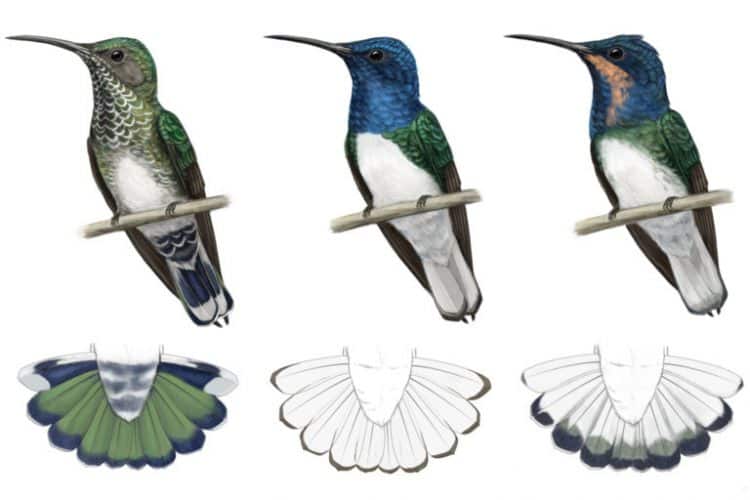
With a vibrant sapphire head, glistening green back, and bright white belly, the male white-necked jacobin looks like a jewel-encrusted figurine. The mildly tinted green-and-white female looks drab by comparison.
However, discerning a male white-necked jacobin from a female is not so simple, said Jay J. Falk, who led the study at Cornell University’s Lab of Ornithology in New York. Why? First, all juveniles of the species flaunt vibrant male coloring, no matter their sex. Second, up to 30 percent of the females retain their male feathers into adulthood, said Falk, who is now at the University of Washington in Seattle.
An evolutionary explanation probably accounts for this rare violation of conventional avian plumage, researchers believe.
Scientists have speculated that male ornamental mimicry among some female birds evolved for social reasons, rather than for sexual purposes. However, previous teams studied this phenomenon only by examining specimens in museums. Falk and his colleagues were the first to watch it in action in wild hummingbirds.
“Falk’s team is building on [pioneering research] that first laid out this area, as is often the case in science,” said evolutionary biologist Bruce Lyon of the University of California, Santa Cruz. “This study took those ideas and ran with them.”
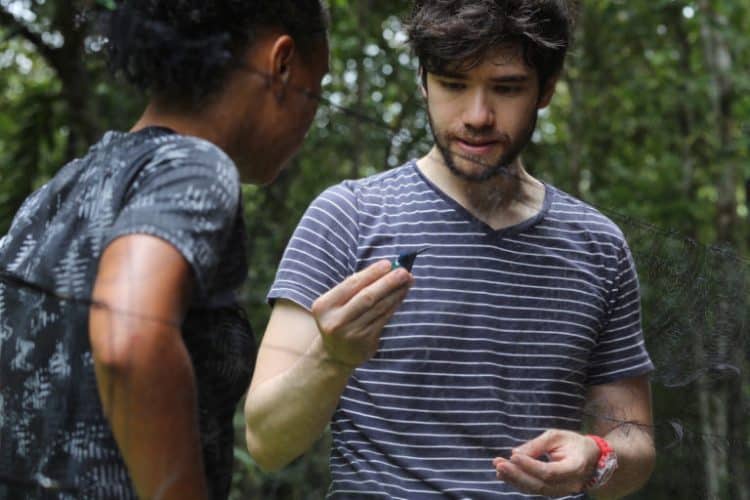
The researchers caught, tagged, and microchipped more than 400 white-necked jacobins near Gamboa, Panama. After identifying their sex through genetic testing, the team videotaped the birds’ behaviors at feeders—where hummingbirds often act aggressively. The scientists also watched birds interact with stuffed and mounted white-necked jacobins perched on the feeders, displaying both male and female color patterns.
The results were clear: Female white-necked jacobins were bullied more fiercely if they displayed drab female coloring rather than bright male coloring. These skirmishes included pecks or pulling of feathers, sometimes in mid-air, and getting chased away. Both males and female birds were the aggressors, as well as other hummingbird species sharing the feeders.
“People like to think hummingbirds are these sweet little angelic creatures, but they’re really not,” Falk told Mongabay. “A lot of the mythology from Central and South American tribes pictured hummingbirds as like warriors. I think that’s a little closer to the truth.”
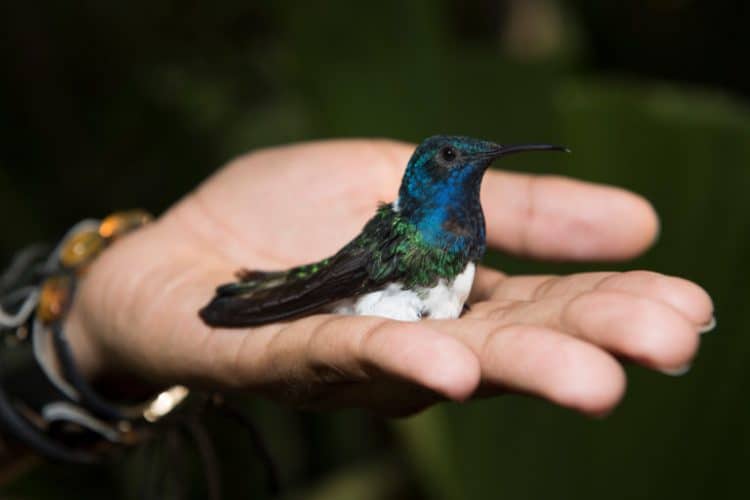
As for mating behaviors, male white-necked jacobins chose to court the stuffed mounts with regular female feathers over females that looked like males. “This doesn’t mean the male-like females never mate,” Falk said. “[But] given the option, males seem to choose the drab females.”
Some females in other hummingbird species also look like males, Falk explained, but scientists have not explored the reasons. The social selection his team found in white-necked jacobins may help explain the broader phenomenon, he said.
Male patterning in female hummingbirds may have evolved because of how much these birds must eat, Falk’s team suspects. Hummingbirds have such high metabolisms that they can starve to death within hours. That, in combination with violent competition over food, creates a system in which dining in peace is a valuable trait.
As Lyon noted, “Because [hummingbirds] are so pugnacious and feisty, it sort of makes sense that you’re going to get a system where it pays not to be harassed.”
Citation:
Falk, J. J., Webster, M. S., Rubenstein, D. R. Male-like ornamentation in female hummingbirds results from social harassment rather than sexual selection. Current Biology 31, 4381-4387 (2021). doi: 10.1016/j.cub.2021.07.043
This article by Megan Kalomiris was first published by Mongabay.com on 23 November 2021. Lead Image: A white-necked jacobin with the brightly colored feather patterns typical of males. Photo by Irene Mendez Cruz.
What you can do
Support ‘Fighting for Wildlife’ by donating as little as $1 – It only takes a minute. Thank you.
Fighting for Wildlife supports approved wildlife conservation organizations, which spend at least 80 percent of the money they raise on actual fieldwork, rather than administration and fundraising. When making a donation you can designate for which type of initiative it should be used – wildlife, oceans, forests or climate.
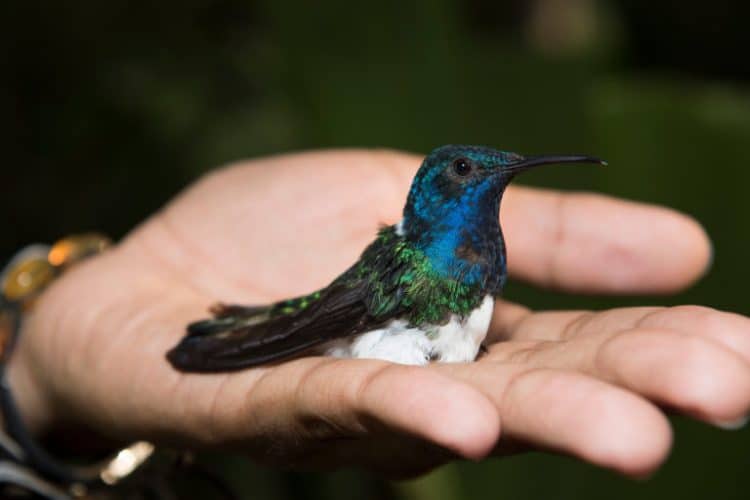

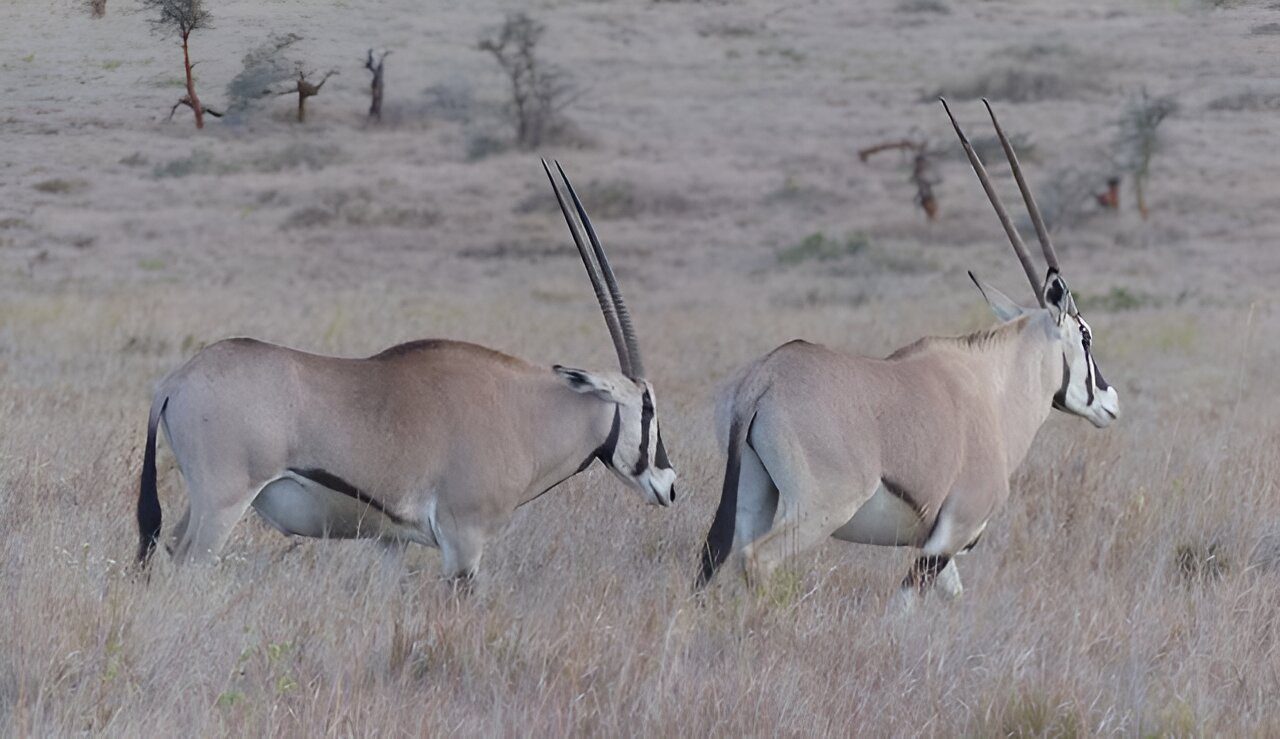


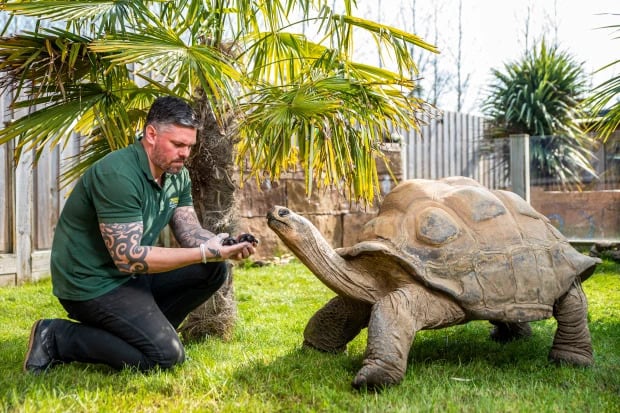

Leave a Reply